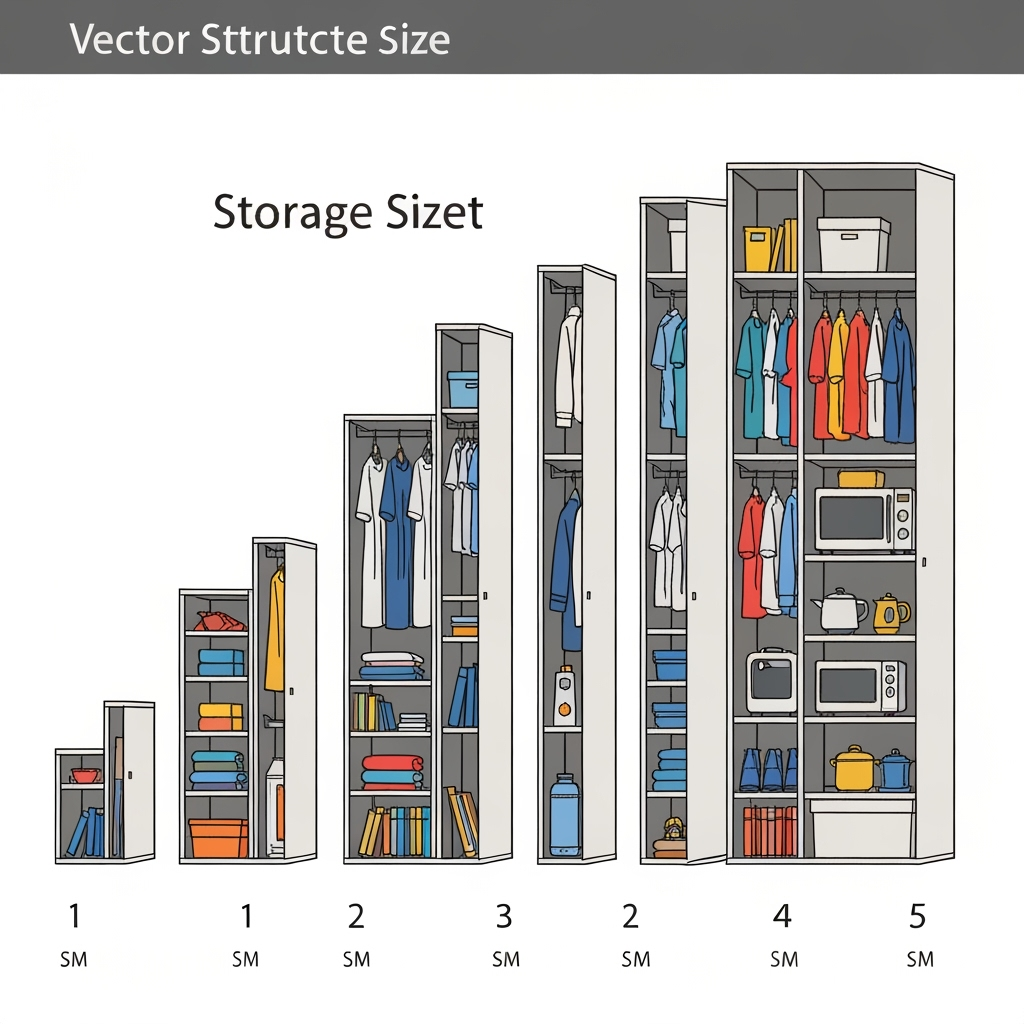
Why Smart Storage Planning Matters
Moving can be overwhelming, but choosing the right storage unit size shouldn’t be. Whether you’re downsizing your urban apartment, transitioning between homes, or simply need extra space, proper planning can save you time, money, and stress. This comprehensive guide will help you accurately assess your storage needs and choose the perfect unit size.
How to Assess Your Storage Needs
Before you start measuring furniture or counting boxes, follow these essential steps:
- Create a detailed inventory of items you plan to store
- Measure large furniture pieces and appliances
- Consider seasonal items and future needs
- Factor in aisle space for accessibility

Common Storage Unit Sizes and What They Hold
5×5 Unit (25 sq ft)
Perfect for:
- Small furniture pieces
- Seasonal decorations
- Several boxes of personal items
- Roughly equivalent to a large closet
5×10 Unit (50 sq ft)
Ideal for:
- Contents of a studio apartment
- Major appliances
- Multiple boxes plus furniture
- Similar to a walk-in closet
10×10 Unit (100 sq ft)
Accommodates:
- One-bedroom apartment contents
- Living room and dining room sets
- Major appliances and boxes
- Comparable to a standard garage
Smart Storage Planning Tips
1. Use Vertical Space Efficiently
Most storage units have 8-foot ceilings. Plan to stack boxes and use shelving units to maximize vertical space while keeping frequently needed items accessible.
2. Create a Layout Plan
Sketch a basic floor plan showing where large items will go. Include an aisle for accessing items stored at the back of the unit.
3. Consider Climate Control
If you’re storing sensitive items like electronics, wooden furniture, or important documents, factor in whether you need a climate-controlled unit.
Common Size-Planning Mistakes to Avoid
- Underestimating the space needed for access paths
- Forgetting to account for awkwardly-shaped items
- Not planning for future additions
- Ignoring ceiling height in space calculations
When to Size Up
Consider choosing a larger unit if:
- You plan to store additional items in the future
- You need frequent access to stored items
- You’re storing irregularly shaped items
- Your move timeline is uncertain
Making Your Final Decision
When you’ve completed your inventory and measurements, add 10-15% more space for proper organization and access. Remember, a slightly larger unit that allows for organization and easy access often proves more valuable than saving money on a cramped space.
Next Steps
Once you’ve determined your ideal unit size:
- Compare prices at different facilities
- Verify actual unit dimensions in person
- Check access hours and security features
- Review the facility’s climate control options
By taking the time to properly plan your storage needs, you’re setting yourself up for a smoother, more organized move. Remember, the goal isn’t just to find a space that fits your belongings, but to create an organized storage solution that serves your needs both now and in the future.










Leave a Reply